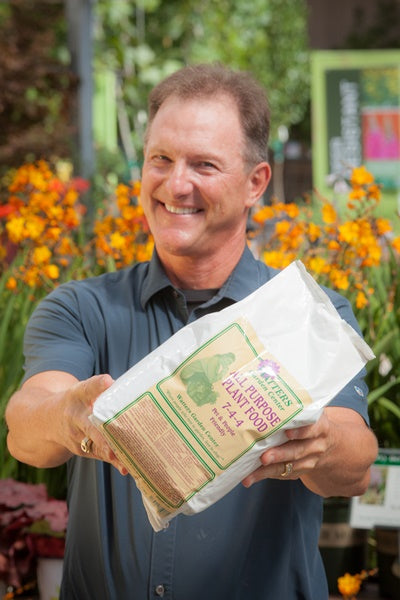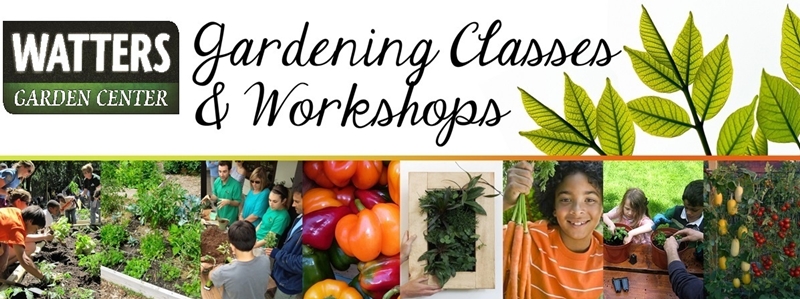by Ken Lain, the mountain gardener


When walking down the fertilizer aisle at Watters Garden Center or any home improvement store, you can’t help but notice the dizzying array of plant foods: bags, bottles, powders, granules, sprays, and concentrates. You also discover an increasing number of organic and “earth-friendly” plant foods. Only ten plant foods make the Top 10 List of Fertilizers. Let’s make sense of the plant nutrients before choosing the best plant food.
Complete Fertilizer
Native Pine, Spruce, Cedar, and Junipers prefer a balanced fertilizer or plant food. For vegetable and flower gardens, a complete fertilizer is necessary to supply plants with the three major elements required to thrive:
Nitrogen (N): Promotes healthy foliage and leaves.
Phosphorus or Phosphate (P): Stimulates root systems, bud, and vegetable growth.
Potassium or Potash (K): Promotes stronger stems and aids in forming flowers and fruit.
The fertilizer label will list the nutrients in the order of NPK, with numbers representing the percentage of nutrients compared to filler ingredients. Watters 7-4-4 All Purpose Plant Food contains 7% Nitrogen, 4% Phosphorus, and 4% Potassium. Filler ingredients are inert materials that add weight and volume to make the plant food easier to spread. Limestone, sawdust, and clay are used in powdered formulas, while water enhances liquid fertilizers. More important fillers add micronutrients like iron and sulfur for increased plant health and color.
Flower fertilizers like Watters Flower Power 12-48-8 usually have a more significant percentage of Phosphorus than other ingredients. Healthy flowers start with a vigorous root system, and a phosphate boost ensures your flowers get a strong start. Autumn flowers like Pansy, Snap Dragon, and Mums appreciate this boost of Phosphorus.
Chemical Fertilizers are inexpensive and widespread, but what are they?
Fertilizer manufacturers like Scotts, Miracle-Gro, Vigoro, and Ironite create artificial fertilizers by combining inorganic chemicals to form compounds like ammonium nitrate or magnesium sulfate. An advantage of chemical fertilizers is that rapid-growing plants take up nutrients quickly, sometimes too fast.
Disadvantages include harmful effects on pets that play in the area, bird safety, and the negative impact on garden worms. Chemicals have a negative potential for drinking water when misused. The chemicals are released so rapidly that they taint your drinking water for those on a well. Earth-friendly organics are highly recommended.
Spring, Summer, and Fall are the best seasonal dates to apply plant foods to the landscape. Local gardeners use Easter, July 4th, and Halloween as timely holiday markers for best application dates.
Most crucial feeding of the year is the Autumn feeding. Plants use this food to form next spring flowers on fruit trees, increased blooms on spring blooming lilacs and roses, and a must for evergreen health through winter.
Foliar Fertilizer
Foliar fertilizers are liquid nutrients that plants absorb through their leaves. Not all vegetable and flowering plants feed this way efficiently because the wax and hairs on the leaves act as a barrier to nutrient uptake. However, some nutrient deficiencies are addressed quickly by using foliar fertilizers. Potassium is one readily absorbed nutrient in a foliar feeding application, so foliar fertilizers are appropriate for treating potassium deficiencies.
If your flowers exhibit chlorosis and yellowing of the foliage, your plants have an iron deficiency. Another situation where the rapid results achieved by foliar plant foods are helpful.
Two-week intervals are best when using liquid or water-soluble plant food in the garden. This pattern brings out the most fragrance and color of blooming plants.
Organic Fertilizer Benefits
Organic fertilizers come from living things like barnyard manure, fish emulsion, leaf mold, and non-living materials like rock phosphate and greensand. Plant food from organic matter supplies essential nutrients to your plants and improves soil strength and texture.
Benefits of Organic Plant Food
Don’t burn plants
Strengthen plants’ immune systems
Are non-toxic to beneficial insects and wildlife
Remain active in the soil for extended plant health
Best Advice – Feed everything in the landscape before Halloween. This is the most important feeding of the year. Plants need additional food in the spring and again in summer. All Purpose Plant Food 7-4-4 is used every change in garden season: Autumn, Spring, and Summer. The best application holidays to apply by are Easter, Independence Day on July 4th, and Halloween.
Go Deeper with my 4 Steps of Proper Plant Food.

Free Garden Classes are offered @ Watters Garden Center
We go deep into growing better. Check out this Summer’s class selection offered every Saturday @ 9:30 am.
October 7 – Fall ‘To-do‘ list for a Healthy Yard
October 14 – Autumn Colors Best Enjoyed at Home
October 21 – Succulents, Cacti and the Low Maintenance Garden
October 28 – Showy Shrubs of Autumn
Until next week, I’ll be helping gardeners feed healthier plants here at Watters Garden Center.
Ken Lain can be found throughout the week at Watters Garden Center, 1815 Iron Springs Rd in Prescott, or contacted through his website at WattersGardenCenter.com or Top10Fertilizers.com.


